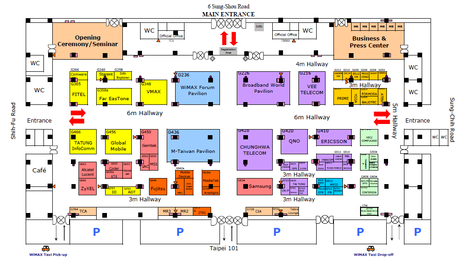Trade shows offer a valuable platform for businesses to showcase their products and services, network with industry professionals, and generate leads. One of the key factors in ensuring a successful trade show experience is effective floor plan management. An optimized floor plan can enhance the flow of traffic, maximize visibility for exhibitors, and create an engaging environment for attendees. Here’s a comprehensive guide to mastering floor plan management at trade shows.

1. Understanding the Venue
Before diving into floor plan design, it’s crucial to understand the venue’s layout and characteristics. Gather detailed information about the venue, including dimensions, entrance and exit locations, emergency exits, and utilities. Familiarize yourself with any restrictions or requirements set by the venue. This foundational knowledge will inform your floor plan decisions and help you avoid potential issues.
2. Define Objectives
Identify the primary objectives of your trade show. Are you aiming to maximize exhibitor space, create specific thematic zones, or facilitate smooth attendee flow? Clearly defined objectives will guide your floor plan design and ensure that it aligns with your overall event goals.
3. Segment the Floor Plan
Segment the floor plan into distinct zones based on the objectives of the trade show. Common zones include:
- Exhibit Areas: Allocate space for exhibitors based on their size and requirements. Consider placing high-profile or larger exhibitors in strategic locations to attract more foot traffic.
- Networking Areas: Designate areas for networking and informal interactions. Comfortable seating and a welcoming atmosphere can encourage meaningful conversations and connections.
- Presentation Areas: If your trade show includes presentations or demonstrations, position these areas strategically to attract attendees and ensure that they are easily accessible.
- Registration and Information Desks: Place these desks near the entrance to streamline the check-in process and provide attendees with essential information about the event.
4. Optimize Traffic Flow
Effective floor plan management should facilitate smooth traffic flow throughout the venue. Avoid bottlenecks by ensuring that pathways are wide and unobstructed. Use clear signage to guide attendees to key areas and create intuitive routes between different zones. Consider incorporating interactive elements or visual attractions to draw attendees through the venue.
5. Incorporate Technology
Leverage technology to enhance floor plan management. Digital floor plans and interactive maps can be integrated into event apps or websites, allowing attendees to navigate the venue with ease. Real-time updates and notifications can also help manage any changes or emergencies.
6. Plan for Flexibility
Trade shows are dynamic events, and flexibility is key to successful floor plan management. Build some flexibility into your plan to accommodate last-minute changes or unexpected issues. Have contingency plans in place for potential challenges, such as technical difficulties or changes in exhibitor requirements.
7. Engage Exhibitors
Engage with exhibitors to understand their needs and preferences. Ensure that their booths are strategically placed to maximize visibility and accessibility. Communicate any specific requirements they may have and address them in the floor plan design. A collaborative approach can lead to a more successful and satisfying experience for both exhibitors and attendees.
8. Evaluate and Adjust
After the trade show, evaluate the effectiveness of the floor plan. Gather feedback from exhibitors, attendees, and staff to identify areas for improvement. Use this feedback to make adjustments and refine your approach for future events.
Effective floor plan management is crucial for the success of any trade show. By understanding the venue, defining clear objectives, segmenting the floor plan, optimizing traffic flow, incorporating technology, planning for flexibility, engaging exhibitors, and evaluating the results, you can create a well-organized and engaging event that meets the needs of all stakeholders. Implementing these strategies will help ensure a successful and memorable trade show experience.



